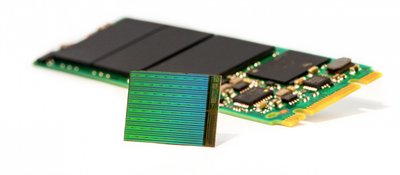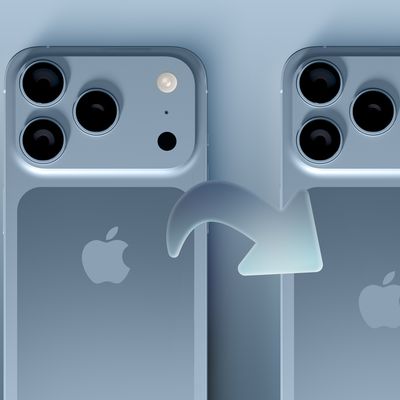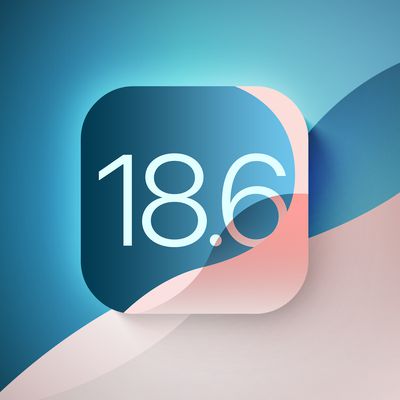Intel's New 3D NAND Technology Allows for Greater Than 10TB Solid-State Drives
Intel and Micron on Thursday announced the availability of new 3D NAND technology that enables high-density flash devices with three times more storage capacity than other NAND technologies in production. 3D NAND technology is also more cost efficient than planar NAND, with faster performance, improved latency and new sleep modes that result in low-power use by cutting power to inactive NAND die.

The advancements pave the way for future Macs and other devices with flash memory to be equipped with greater than 10TB solid-state drives, significantly more storage capacity than the maxed out 1TB PCIe-based flash storage upgrade option that Apple offers for the MacBook Pro, iMac and Mac Pro. As planar NAND faces practical scaling limits, Intel and Micron expect that 3D NAND will shape the future of flash memory.
"Micron and Intel's collaboration has created an industry-leading solid-state storage technology that offers high density, performance and efficiency and is unmatched by any flash today," said Brian Shirley, vice president of Memory Technology and Solutions at Micron Technology. "This 3D NAND technology has the potential to create fundamental market shifts. The depth of the impact that flash has had to date—from smartphones to flash-optimized supercomputing—is really just scratching the surface of what's possible."
3D NAND has innovative process architecture with a floating gate cell that enables greater performance and increased quality and reliability. Intel and Micron expect that 3D NAND technology, which "stacks flash cells vertically in 32 layers to achieve 256Gb multilevel cell (MLC) and 384Gb triple-level cell (TLC) die," will result in continued performance gains, cost savings and widespread adoption of flash storage solutions for mobile consumer devices and enterprise deployment.
Intel and Micron claim that the 256Gb MLC version of 3D NAND is being sampled by select partners beginning this week, while the 384Gb TLC design will be sampling later this spring. Both devices are slated to enter full production in the fourth quarter, and both companies are developing separate lines of SSD solutions based on 3D NAND technology that are expected to be available within the next year.
Given that flash storage solutions using 3D NAND are not expected to be available until the end of this year at the earliest, it is unlikely that larger SSDs based on the new technology will be included in any next-generation Macs for the foreseeable future. Apple also recently refreshed the MacBook Air and 13-inch MacBook Pro, so those two notebook models in particular are still early in their product cycles.
Popular Stories
Apple's next-generation iPhone 17 Pro and iPhone 17 Pro Max are less than three months away, and there are plenty of rumors about the devices.
Apple is expected to launch the iPhone 17, iPhone 17 Air, iPhone 17 Pro, and iPhone 17 Pro Max in September this year.
Below, we recap key changes rumored for the iPhone 17 Pro models:Aluminum frame: iPhone 17 Pro models are rumored to have an...
The long wait for an Apple Watch Ultra 3 appears to be nearly over, and it is rumored to feature both satellite connectivity and 5G support.
Apple Watch Ultra's existing Night Mode
In his latest Power On newsletter, Bloomberg's Mark Gurman said that the Apple Watch Ultra 3 is on track to launch this year with "significant" new features, including satellite connectivity, which would let you...
The upcoming iPhone 17 Pro and iPhone 17 Pro Max are rumored to have a slightly different MagSafe magnet layout compared to existing iPhone models, and a leaked photo has offered a closer look at the supposed new design.
The leaker Majin Bu today shared a photo of alleged MagSafe magnet arrays for third-party iPhone 17 Pro cases. On existing iPhone models with MagSafe, the magnets form a...
iOS 26 and iPadOS 26 add a smaller yet useful Wi-Fi feature to iPhones and iPads.
As spotted by Creative Strategies analyst Max Weinbach, sign-in details for captive Wi-Fi networks are now synced across iPhones and iPads running iOS 26 and iPadOS 26. For example, while Weinbach was staying at a Hilton hotel, his iPhone prompted him to fill in Wi-Fi details from his iPad that was already...
The iPhone 17 Pro Max will feature the biggest ever battery in an iPhone, according to the Weibo leaker known as "Instant Digital."
In a new post, the leaker listed the battery capacities of the iPhone 11 Pro Max through to the iPhone 16 Pro Max, and added that the iPhone 17 Pro Max will feature a battery capacity of 5,000mAh:
iPhone 11 Pro Max: 3,969mAh
iPhone 12 Pro Max: 3,687mAh...
Apple today seeded the second betas of upcoming iOS 18.6 and iPadOS 18.6 updates to public beta testers, with the betas coming just a day after Apple provided the betas to developers. Apple has also released a second beta of macOS Sequoia 15.6.
Testers who have signed up for beta updates through Apple's beta site can download iOS 18.6 and iPadOS 18.6 from the Settings app on a compatible...
Apple is developing a MacBook with the A18 Pro chip, according to findings in backend code uncovered by MacRumors.
Subscribe to the MacRumors YouTube channel for more videos.
Earlier today, Apple analyst Ming-Chi Kuo reported that Apple is planning to launch a low-cost MacBook powered by an iPhone chip. The machine is expected to feature a 13-inch display, the A18 Pro chip, and color options...




















